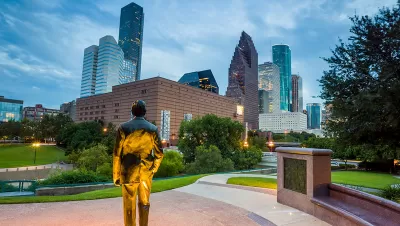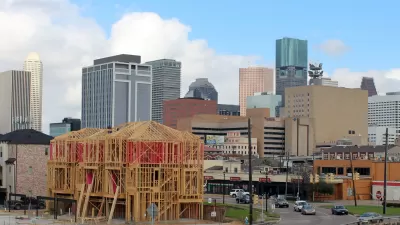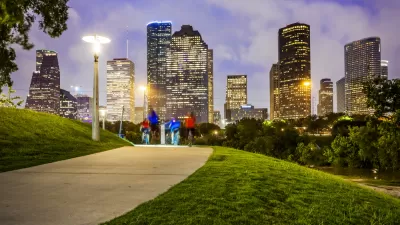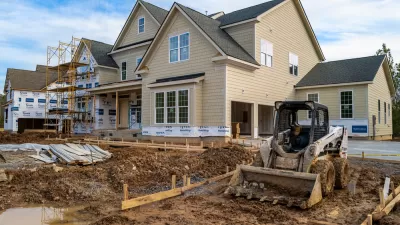A conversation with an architect yields insight into how Houston's pride in the lack of traditional land use regulation mechanisms has created the city as it exists today.

The Rice Design Alliance recently awarded its Spotlight Prize, recognizing up-and-coming architects, to the firm Oualalou + Choi, located in Paris and Casablanca. To commemorate the award, the Houston Chronicle excerpted an interview between Raj Mankad, of the Rice Design Alliance, interviewed Tarik Oualalou. The interview was originally published by the Houston-based architecture and design magazine Cite.
A few of the key excerpts from the interview, in which Mankad and Oualalou examine the city's land use regimes for insight into the city's built form. The interview, especially the portion excerpted in the Houston Chronicle, offers interesting opinions on the effects of planning and land use in this uniquely governed city, all from an architect's perspective:
- "You see spurts of building in short periods of time. So it's very dated. You see a lot of things in the late '70s, and then not in the '80s, a lot of things in the early '90s, and then not. These spurts of construction in short periods of time give it a very dated figure, almost like it's frozen in time….. It's not a city that builds over time. It just builds in moments. It creates a weird "stroboscopic" feel."
- "If there's no counter power, if there's no state, if there's no city, if there's no municipal system, if there's no public desire, organized public desire of sorts — whether it's community or elected or whatever it is — then the developer has no counter power."
FULL STORY: “Our responsibility as architects is to invent the form of public-ness:” An Interview of Tarik Oualalou

Alabama: Trump Terminates Settlements for Black Communities Harmed By Raw Sewage
Trump deemed the landmark civil rights agreement “illegal DEI and environmental justice policy.”

Study: Maui’s Plan to Convert Vacation Rentals to Long-Term Housing Could Cause Nearly $1 Billion Economic Loss
The plan would reduce visitor accommodation by 25% resulting in 1,900 jobs lost.

Why Should We Subsidize Public Transportation?
Many public transit agencies face financial stress due to rising costs, declining fare revenue, and declining subsidies. Transit advocates must provide a strong business case for increasing public transit funding.

Paris Bike Boom Leads to Steep Drop in Air Pollution
The French city’s air quality has improved dramatically in the past 20 years, coinciding with a growth in cycling.

Why Housing Costs More to Build in California Than in Texas
Hard costs like labor and materials combined with ‘soft’ costs such as permitting make building in the San Francisco Bay Area almost three times as costly as in Texas cities.

San Diego County Sees a Rise in Urban Coyotes
San Diego County experiences a rise in urban coyotes, as sightings become prevalent throughout its urban neighbourhoods and surrounding areas.
Urban Design for Planners 1: Software Tools
This six-course series explores essential urban design concepts using open source software and equips planners with the tools they need to participate fully in the urban design process.
Planning for Universal Design
Learn the tools for implementing Universal Design in planning regulations.
Smith Gee Studio
Alamo Area Metropolitan Planning Organization
City of Santa Clarita
Institute for Housing and Urban Development Studies (IHS)
City of Grandview
Harvard GSD Executive Education
Toledo-Lucas County Plan Commissions
Salt Lake City
NYU Wagner Graduate School of Public Service





























